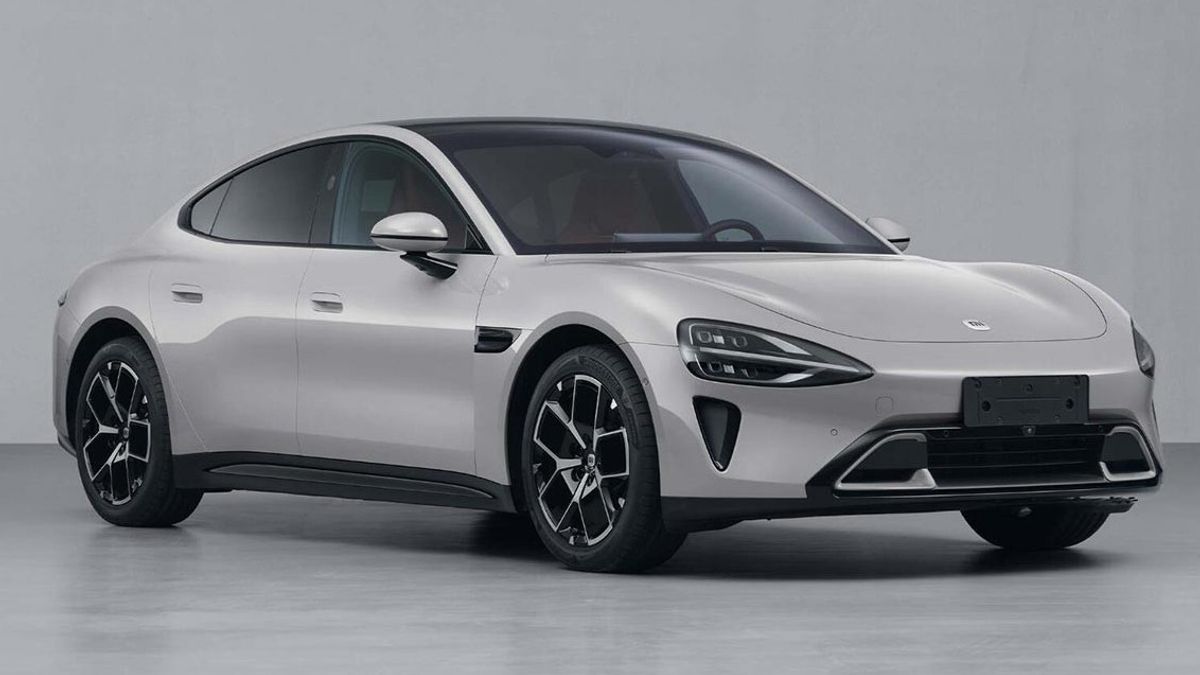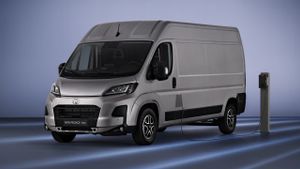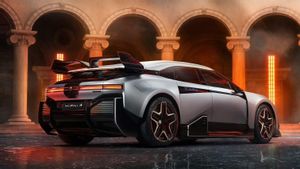JAKARTA - Xiaomi has finally introduced its electric car which is ready to compete in the sedan class and is called the SU7, not the MS11 which has been rumored.
Quoted from the Carscoops page, Thursday, November 16, the technology giant has applied for a sales permit for its first electric vehicle, and the specifications of the car have also been revealed. So what is it like?
This electric car will be produced by Beijing Automotive Industry Holding Co. Ltd (BAIC), with dimensions of 4,997 mm in length, 1,963 mm in width, and 1,455 mm in height, and a wheelbase of 3,000 mm. It will also have two wheel choices, 19 inches, and 20 inches, with tire specifications of 245/45 R19 and 245/40 R20 respectively.

Later, Xiaomi will present three versions, namely SU7, SU7 Pro, and SU7 Max, some of which are equipped with Light Detection and Ranging (Lidar) and some without Lidar. This lidar is installed behind the windshield as the main component of Advanced Driver Assistance Systems (ADAS).
Not only that, there is also a camera on the B pillar which allows the Xiaomi SU7 to have a facial recognition feature to be able to unlock the car door. Interesting right?
Entering the engine, this Chinese cellphone manufacturer has installed a rear-wheel drive system with one exhaust electric motor which has a power of 220 kW, and an all-wheel drive system with 495 kW.

Apart from that, the battery used is LFP from BYD for the lowest type. Meanwhile, the highest type is equipped with an NMC battery from CATL. This electric car has a maximum speed limited to 210 km/hour for the lowest type. Meanwhile, the highest type weighs 2,205 kg and has a maximum speed of 265 kilometers per hour.
SEE ALSO:
Another interesting thing is the ETC function, which is a system that allows drivers to pay tolls on toll roads automatically without stopping the car. In more detail, the operating system in the SU7 car will be supported by HyperOS from Xiaomi. This self-developed system can power smartphones and cars.
Xiaomi will start mass producing this competitor to the Tesla Model 3 in December 2023. Furthermore, distribution will begin in February 2024. The BAIC factory in Beijing has reportedly also carried out production trials.
The English, Chinese, Japanese, Arabic, and French versions are automatically generated by the AI. So there may still be inaccuracies in translating, please always see Indonesian as our main language. (system supported by DigitalSiber.id)











